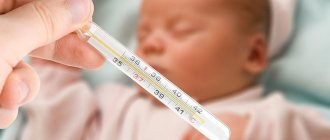Where does the fluid in the amniotic sac come from?
In the first trimester of pregnancy, it is produced by the cells of the amnion itself. In the last trimester, the baby's kidneys take an active part in the formation of fluid. The fetus swallows amniotic fluid, it is absorbed in its gastrointestinal tract and, together with urine, is excreted from the child's body back into the amnion. The water cycle in the amnion promotes the renewal of amniotic fluid every few hours throughout the entire 40 weeks.
The volume of fluid increases, increasing by 40-50 milliliters with each subsequent week of pregnancy. By about 38 weeks, its volume reaches a maximum of 1 to 1.5 liters. The amount of water in each specific case is determined by specialists, guided by the amniotic fluid index during an ultrasound examination.
Interference Research
Vaginal infections or urine do not affect the results of the AmniSure test. Careful study and analysis showed that during vaginal infections, the concentration of PAMG-1 in the vagina never exceeded 3 ng/ml. The sensitivity level of AmniSure is 5-7 ng/ml, excluding interference due to infections. The concentration of PAMG-1 in sperm does not exceed 4 ng/ml. The PAMG-1 concentration of sperm in the vagina is even lower due to the effect of reducing the concentration by 4 times when sperm enters the vagina. Therefore, no interference with sperm was observed during the development and testing of the AmniSure test. The same applies to urine. Fifteen urine samples were tested for PAMG-1 concentrations by ELISA. The sensitivity of the ELISA was 0.5 ng/ml. The AmniSure test was used in parallel. Samples were obtained from pregnant women between 25 and 40 weeks' gestation. Both methods gave negative results. PAMG-1 was not detected in any case.
What does amniotic fluid consist of?
Normally, amniotic fluid is clear and odorless. At the end of pregnancy, it may become slightly cloudy due to the entry of epidermal cells and waste from the sebaceous glands. The green tint of the water should alert specialists; this is one of the signs of intrauterine fetal hypoxia.
The amniotic fluid includes the baby's secretions (urine, discharge from the lungs), and the presence of oxygen, carbon dioxide, salts, fats, glucose, hormones and antigens that correspond to the baby's blood type.
Stability of results
AmniSure is a test system, the results of which must be read 5 - 10 minutes after immersing the test strip in the tube. The stability of the test was studied in a lot containing 1000 sets. Purified PAMG-1 was used at concentrations ranging from 10 to 5 ng/ml in saline. Duration and stability of results were also determined. After the result became visible (stripes appeared in the test area), it remained stable for at least 5 minutes. The stability of the test was observed even at very low concentrations of PAMG-1 (5-10 ng/ml). If the concentrations were higher, the strips remained stable for hours after the test. Therefore, the stability of the test is 5 minutes and the test time is 10 full minutes.
Table 1
Stability study results
| Concentration of purified PAMG-1 in saline (ng/ml) | Time elapsed before color appears in the test area |
| 10 | ~2.5 min |
| 5 | ~5.5 min |
What are the functions of amniotic fluid during fetal development?
Throughout pregnancy, amniotic fluid provides reliable protection for the fetus from injury, bruises, blows and other mechanical damage. Besides
- this is a source of comfortable habitat for the embryo
- amniotic fluid is intensively involved in metabolism
- they protect the umbilical cord from compression
- serve as a barrier that prevents the fusion of the skin of the fetus with the walls of the uterus
- protect the child’s body from various infections from the genital tract
- help prepare the baby’s gastrointestinal tract, respiratory and excretory systems for work outside the mother’s body
Cross reactivity
The specificity of the monoclonal antibodies used in AmniSure was studied by examining their cross-reactivity with the following proteins: α2-fertility microglobulin, human chorionic gonadotropin, trophoblastic β1-glycoprotein, human placental lactogen, α-fetoprotein, human serum albumin and certain insulin-like growth factors. Monoclonal antibodies A and B used in AmniSure did not react with these proteins, with one exception: antibodies B cross-reacted with insulin-like growth factor BP-1 using the ELISA method. It has been shown that IGFBP-3 concentrations in the vagina of pregnant women can reach 680 ng/ml, but this did not affect the results of the AmniSure test.
The role of amniotic fluid during childbirth
At the very beginning of labor, the amnion presses on the cervix and promotes its soft opening. If the birth is physiological, the amnion ruptures when the cervix dilates by 5-6 centimeters. Its timely rupture ensures a normal process of opening and smoothing, which provides comfortable conditions for the child during contractions.
The integrity of the membranes during childbirth provides the fetus with protection from infections. While in the amniotic fluid, the baby avoids the direct impact of the uterine walls, which contract during contractions. But rupture of the bladder before the onset of labor often leads to weak labor, which has to be stimulated.
CONDUCTING RESEARCH
- Take the test tube with the solvent by the cap and shake well, making sure that all the liquid inside the test tube sinks to the bottom. Open the tube and place it in a rack in a vertical position.
- To collect a sample from the vaginal surface, use the sterile polyester swab included in the kit. Remove the sterile swab from the package according to the instructions on the package. Before insertion into the vagina, the tip of the tampon should not come into contact with anything. Take the tampon by the middle of the handle and carefully insert the polyester tip of the tampon into the vagina to a depth of no more than 5 - 7 cm. Leave the tampon in the vagina for 1 minute, and only then remove it.
- Dip the polyester end of the swab into the tube and rinse the swab in the solution by rotating the swab for 1 minute.
- Remove the swab and place it in a disinfectant solution for treating biological waste.
- Open the foil pouch at the cut points and remove the AmniSure test strip.
- Dip the white end of the test strip (indicated by arrows) into the solvent tube and leave it for at least 5 and no more than 10 minutes . Massive leakage of amniotic fluid will make the result visible early (after 5 minutes), and small leakage will become visible only after 10 minutes.
- Remove the test strip from the tube if both stripes appear (but not earlier than 5 minutes) or exactly 10 minutes after immersion. Read the results by placing the test strip on a clean, dry, flat surface. Do not read the results if more than 15 minutes have passed since the test strip was immersed in the tube.
Amniotic fluid index - upper and lower limits of normal
The volume of fluid in the amniotic sac is assessed by a medical specialist during all routine ultrasound scans. For each week of pregnancy, the IAF table contains data on the normal fluid volume along with maximum permissible deviations from these indicators. If the AFI value exceeds the upper limit of normal, the doctor can conclude that there is polyhydramnios. A slight excess of the norm means moderate polyhydramnios.
| Gestational age in weeks | Average normal value in mm | Probable fluctuations in mm |
| 16 | 121 | 73-201 |
| 17 | 127 | 77-211 |
| 18 | 133 | 80-220 |
| 19 | 137 | 83-225 |
| 20 | 141 | 86-230 |
| 21 | 143 | 88-233 |
| 22 | 145 | 89-235 |
| 23 | 146 | 90-237 |
| 24 | 147 | 90-238 |
| 25 | 147 | 89-240 |
| 26 | 147 | 89-242 |
| 27 | 156 | 85-245 |
| 28 | 146 | 86-249 |
| 29 | 145 | 84-254 |
| 30 | 145 | 82-258 |
| 31 | 144 | 79-263 |
| 32 | 144 | 77-269 |
| 33 | 143 | 74-274 |
| 34 | 142 | 72-274 |
| 35 | 140 | 70-279 |
| 36 | 138 | 68-279 |
| 37 | 135 | 66-275 |
| 38 | 132 | 65-269 |
| 39 | 127 | 64-255 |
| 40 | 123 | 63-240 |
| 41 | 116 | 63-216 |
| 42 | 110 | 63-192 |
LITERATURE
- Cousins LM et al., “AmniSure Placental Alpha Microglobulin-1 Rapid Immunoassay versus Standard Diagnostic Methods for Detection of Rupture of Membranes,” Am J Perinatol 2005; 22: 317-320.
- Mercer BM et al., Am J Obstet Gynecol 2000, Sep; 183 (3):738-45.
- French JI, McGregor JA, The Pathobiology of premature rupture of membranes. Seminars in Perinatology, 1996, 20, No. 5, pp. 344-368.
- Furman B. et al., Clinical significance and outcome of preterm prelabor rupture of membranes: population-based study. Eur J Obstet Gynecol Reprod Biol 2000, Oct; 92(2):209-16.
- Mercer BM et al., Am Journal Obstet Gynecol 2000, Sep; 183 (3):738-45.
- Lockwood CJ et al., Am. J. Obstet. Gynecol. 1994, 171, No. 1, pp.146-150.
- Darj E., Lyrenas S., Acta Obstet. Gynecol. Scand., 1998, 77, pp.295-297
- Gorodeski IG, Haimovitz L., Bahari CM, 1982, Journal Perinat. Med; 10 (6):286-92
- D. Petrunin, “Immunochemical identification of organ specific human placental alpha-globulin and its concentration in amniotic fluid”, Akush Ginekol (Mosk) 1977 Jan(1):64-5
- Y. Tatarinov, D. Petrunin et al. 1980; "Two new Human Placenta-Specific ?-Globulins: Identification, Purification, Localization, and Clinical Investigation", The Human Placenta, Ed by A. Klopper et al., Acad. Press, London-NY, pp.35-46
Tags: pregnancy
Polyhydramnios: types, symptoms, causes, danger of the condition
A conclusion about polyhydramnios is made by a specialist if the fluid volume exceeds 1.5-2 liters during normal pregnancy. Polyhydramnios is usually diagnosed at the end of the second or beginning of the third trimester.
There are acute polyhydramnios with a sudden increase in the volume of water, which is accompanied by shortness of breath, a feeling of heaviness and pain in the abdomen, severe swelling, and chronic, in which the amount of amniotic fluid increases gradually, without worsening the well-being of the pregnant woman.
Among the causes of polyhydramnios are the following:
- presence of diabetes mellitus in the mother
- an acute or chronic infectious process was detected in the mother’s body
- diseases of the cardiovascular system
- various fetal developmental anomalies
- Rhesus conflict between mother and fetus
Ultrasound is the main tool in diagnosing this condition. The main criterion for assessing the amount of amniotic fluid is the size of the vertical pocket. If during the examination the specialist determined its value to be 8-11 cm, this is a mild degree of polyhydramnios. We can talk about the average degree of this condition when the size of the vertical pocket is from 12 to 15 centimeters, but if this figure reaches 16 cm, then a conclusion is made about pronounced polyhydramnios.
Upon manual examination of the pregnant woman, a significant increase in the circumference of the abdomen, as well as the height of the uterine fundus, is noted. The uterus itself is in good shape, which is why parts of the fetus are difficult to palpate. Excessive motor activity of the child is noted, heart sounds are heard indistinctly.
The danger of polyhydramnios is that a large amount of water greatly stretches the uterus, as a result of which it contracts poorly during childbirth. This leads to a protracted labor and possible bleeding in the postpartum period. Polyhydramnios can cause placental abruption and prolapse of the umbilical cord, which poses a great danger to both the mother and the unborn child.
The birth strategy for polyhydramnios involves performing an amniotomy (puncture of the amniotic sac) at the very beginning of labor. Amniotic fluid is then slowly released through a needle or catheter to reduce the volume of the uterus and tighten its walls. After the baby is born, the mother in labor is prescribed medications to stimulate contraction of the uterine muscles.
Mild chronic polyhydramnios has virtually no effect on the course of pregnancy; childbirth usually occurs on time and is not complicated. However, parallel treatment of the disease that causes polyhydramnios is required.
Severe polyhydramnios often provokes premature birth. If there are symptoms indicating circulatory disorders in the expectant mother with severe swelling and severe shortness of breath, the question of artificial termination of pregnancy is raised.
Risk group
The most common causes of premature leakage of amniotic fluid are:
- The mother has an infectious-inflammatory focus;
- The so-called isthmic-cervical insufficiency (when the cervix is not closed enough and cannot cope with the pressure of a growing child);
- Mechanical injury during pregnancy;
- Poorly pressed presenting part of the fetus (usually due to the woman’s narrow pelvis and other anomalies);
- Multiple pregnancy and polyhydramnios;
- Amniocentesis, chorionic villus biopsy and cordocentesis (diagnostic procedures during pregnancy, performed for genetic and other indications).
Oligohydramnios: etiology and danger to the fetus
This condition is diagnosed if by the end of pregnancy the amount of amniotic fluid does not exceed 300 milliliters. Typically, oligohydramnios is a consequence of a complicated pregnancy.
Among the reasons leading to this condition
- gestosis in pregnant women;
- maternal hypertension;
- toxoplasmosis, cytomegalovirus, mycoplasma and similar infections in the mother;
- malformations of the fetal urinary system;
- chronic fetal hypoxia;
One of the signs of a decrease in the amount of amniotic fluid is a lag in the height of the uterine fundus and a discrepancy between the abdominal circumference and the normative indicators of the expected period of pregnancy. There is also a decrease in fetal motor activity.
On manual examination, the pregnant part of the fetus is clearly identified, the audibility of heart sounds is good, the uterus is dense. The severity of oligohydramnios is more accurately determined using ultrasound.
Oligohydramnios, detected in the 2nd trimester of pregnancy, is a serious symptom. It is at the period of 18-26 weeks that the probability of spontaneous termination of pregnancy and intrauterine fetal death is high.
A decrease in the amount of amniotic fluid leads to delayed fetal development (hypotrophy), intrauterine infection and contributes to the development of intrauterine defects. The degree of oligohydramnios is determined by ultrasound fetometry.
With moderate oligohydramnios, the pregnancy is most often carried to term; only in exceptional cases is an emergency caesarean section performed.
If childbirth occurs naturally, oligohydramnios involves opening of the amnion: a small amount of water leads to the formation of a flat bladder without anterior waters, which delays normal labor.
Clinical trial results
Sensitivity: 99 % Specificity: 100% . Positive diagnostic value: 100% . Negative diagnostic yield: 99% .
In parallel with the nitrazine test and the crystallization test, patients were studied using AmniSure. If there were discrepancies between AmniSure and other tests, the patient was placed under close clinical observation. In all cases of such discrepancies, the AmniSure test results were found to be more accurate. The study protocol described above resulted in two sets of data: “adjusted results” and “unadjusted results.” Unadjusted results were collected on the assumption that the AmniSure test gave incorrect results when inconsistent with other tests. After carefully monitoring all of these cases and confirming that the AmniSure test was correct in all cases of discrepancy, a “corrected” data set was compiled. As a result, the AmniSure test was much more accurate than other tests studied.
40th week of pregnancy: how is the baby developing?
40 weeks – full-term pregnancy. The weight of a child born at this period ranges from 2,600 g to 4,400 g, and his body length is 48-53 cm. These indicators are very arbitrary, since at 40 weeks miniature babies weighing 2,600 g and real heroes are born, whose body weight approaches 5,000 g. The body length of newborns can also vary from 45 to 55 cm.
Most women give birth at 40 weeks. At this stage, the baby is completely ready for birth; it meets all the parameters of a full-term baby. Before birth, the baby presses its arms and legs closely to the body, bends its head as much as possible and presses against the exit of the uterus. This position makes it possible to pass the birth canal with the narrowest part of the skull. During labor, with each contraction, the child gradually moves downward; he does not move in a straight line, but makes helical-translational movements, as if screwing into the mother’s birth canal. As the newborn moves forward and his head descends completely, the cervix opens completely. This is followed by pushing, that is, contractions of the uterus that move the baby along the birth canal. The baby's head gradually appears, followed by his body. Childbirth is a complex mechanism that is aimed not only at the safe passage of the birth canal by the child, protecting him from accidental injuries due to increased pressure, but also at preventing ruptures of the woman’s soft tissues.
Prevention
Considering that rupture of membranes is most often an infection, the main preventive measure is careful preparation for pregnancy. A woman should be examined for STIs before pregnancy, and if they are detected, undergo treatment under the supervision of specialists and be tested again.
It is also necessary to stabilize chronic inflammatory processes in the body (chronic bronchitis, tonsillitis, pyelonephritis, colitis, etc.), and diseases that lead to a decrease in the body's defenses and disrupt metabolic processes (diabetes mellitus, arterial hypertension, anemia).
Also, for the full formation of the membranes and their adequate functioning, it is important to lead a healthy lifestyle - eat right, give up alcohol and smoking, limit the intake of harmful production factors into the body (if necessary, during pregnancy, a woman can be transferred to “light work” if the enterprise there is such a possibility).
When to see a doctor
If you are pregnant full term and your water breaks, stay calm and contact your doctor or maternity hospital to find out when you need to leave. You should also consult a doctor in the following cases:
- The waters broke before the 37th week
of pregnancy
, - Contractions don't start
although the waters have already broken. In this case, your doctor may recommend inducing labor.
In case the doctor recommends that you go to the maternity hospital immediately, you should have a bag packed with all the necessary things.
Specialists
Akinshina Svetlana Vladimirovna
Obstetrician-gynecologist, hemostasiologist with an academic degree.
Pregnancy management S.V. Akinshina will help avoid severe complications: gestosis, placental insufficiency, fetal loss syndrome.
The doctor's expertise includes hemostasis disorders and immunological infertility.
Margiani Fatima Abdurashidovna
Doctor of Medical Sciences, qualified diagnostician of female infertility factors.
Provides competent support for late, multiple or problematic pregnancies. A consultation and examination with Fatima Abdurashidovna will help determine the cause of failure to conceive a child or recurrent miscarriage.
Akhmedova Larisa Maratovna
Obstetrician-gynecologist with experience in a famous Israeli clinic, expert in monitoring pregnancy and the postpartum period.
Performs surgical operations: intimate plastic surgery, removal of polyps, treatment of erosion with Surgitron radioknife. Provides consultations and examinations to couples with suspected infertility.
Bitsadze Victoria Omarovna
Gynecologist-hemostasiologist, professor, doctor of medical sciences.
The doctor's profile is management of high-risk pregnancies, including in women with genetic thrombophilia and a tendency to spontaneous bleeding. Develops effective treatment regimens for infertility associated with autoimmune pathologies and hemostasis disorders.
Treatment tactics
If the membranes rupture close to the internal os with abundant flow of water, it is not possible to prolong pregnancy.
If the gestational age and the condition of the woman and fetus allow, specialists will do everything possible to prolong the pregnancy and allow the baby to mature. But this is only possible with slight leakage of water and small high tears in the shells. The main goal of all events is the birth of a viable child.
Mode
Of course, if the situation described above develops, a woman can only stay in a hospital under the constant supervision of medical personnel. Strict bed rest with the foot end of the bed raised. Any physical activity is limited.
Drug therapy
When prescribing medications, there are three main goals:
- prevent the development of labor or stop it if it has already developed . For this purpose, antispasmodics and tocolytics are prescribed, i.e. drugs that relax muscle fibers, preventing their excitation and contraction. To achieve the effect as quickly as possible, initially the drugs are administered intravenously or intramuscularly, after achieving a lasting effect they switch to the enteral route of administration;
- prevent infection of the membranes, amniotic fluid and fetus. The vagina of even a healthy woman can contain up to 20 representatives of beneficial and opportunistic flora. But this flora, familiar to a woman, can be very dangerous for a fetus developing in sterile conditions. Any microorganism, penetrating upward to the fetus, can lead to termination of pregnancy or the development of severe infectious processes both in utero and after childbirth. The situation is even worse if the pregnant woman has one of the more serious infections - ureamicoplasma, chlamydia, herpes (especially in active form), etc. To prevent the development of infectious complications, the pregnant woman is prescribed antibacterial drugs. Only those approved for use during pregnancy are prescribed. The condition of the pregnant woman and baby is regularly monitored - tests (blood, urine, smears), ultrasound with Doppler, CTG;
- prepare the fetal lungs for breathing. The lungs do not function during intrauterine development, the alveoli are in a collapsed state, and only the production of a sufficient amount of a special substance - surfactant - allows the child to take the first breath, expanding the lungs, and continue breathing movements. If there is not enough surfactant or it is immature, the walls of the alveoli remain stuck together. And the child simply dies without oxygen. Of course, medicine does not stand still, and they have already learned to synthesize a surfactant, the injection of which into the lungs of premature babies allows them to breathe. However, this is an extremely expensive “pleasure”, so bulk purchases to each medical institution are impossible for financial reasons; it is usually purchased for a specific small patient. Fortunately, there is a more widely available opportunity to stimulate the child’s lungs - the mother is given hormonal drugs.
And in this particular case, the question of whether hormones are harmful to a child does not even arise. This is a necessity that will save the baby’s life;
- activate the production of new amniotic fluid to replace the lost one. For this purpose, drugs are prescribed that improve uteroplacental blood flow, rheological properties of blood, and metabolic processes in the body. Glucose-saline solutions, etc., are infused intravenously.
Delivery
Conservation therapy is carried out until the fetal lungs are ready for independent breathing, if the life and health of the pregnant woman and the child are not in danger. If monitoring indicates a violation of the condition of one or both, emergency delivery is resorted to. Childbirth can occur either naturally or through a caesarean section. Everything is decided strictly individually, after examining the woman by the attending doctor or a council of specialists.
The following complications may occur during childbirth:
- weakness of labor;
- premature detachment of a normally located placenta;
- injuries to women and fetuses;
- infection of the birth canal, etc.
After delivery, monitoring of the condition of mother and child continues. The baby is at risk for the development of infectious processes, anemia, and neurological disorders. After discharge from the maternity hospital, such children, in addition to the pediatrician, should be regularly monitored by specialized specialists during the first year of life.
39th week of pregnancy: what happens to the fetus?
At the 39th week, the child’s weight reaches 3,100-3,500 g, and his height is 50-52 cm. Height and weight indicators are very relative and can differ significantly. The baby is rapidly preparing for the most important test in his life - birth, which requires endurance and significant effort. During this period of pregnancy, the size and weight of the child’s adrenal glands, that is, the glands of the endocrine system, which are responsible for the human body’s response to stress factors, increase. It is the hormones adrenaline and norepinephrine produced by the adrenal glands that help the child adapt as quickly as possible to new temperature conditions, tactile, sound and light impulses.
All the baby's senses are developed at 39 weeks. Within a few moments after birth, the baby can focus his gaze, he reacts to bright light and moving objects, many scientists claim that newborns distinguish colors and see the faces of parents and doctors. In the last weeks of intrauterine life, the baby's hearing is also fully developed; after birth, he reacts to loud sounds and noise. A newborn baby can identify the basic shades of taste, recognize sour, bitter, sweet and salty.
In the womb, the baby is in an aquatic environment that minimizes contact. Immediately after birth, the baby experiences many tactile sensations; unlike intrauterine life, he feels the touch of his mother’s hands and diapers, towels, dressings and other materials. Babies especially like the touch of skin to skin, so in a modern maternity hospital, newborns are always placed on their mother’s stomach even before the umbilical cord is cut. The child adapts more easily to the new environment and feels protected. Placing the baby out has not only a psychological aspect, since it promotes the colonization of microorganisms from the mother’s skin onto the skin and mucous membranes of the baby, and increases his immunity.










